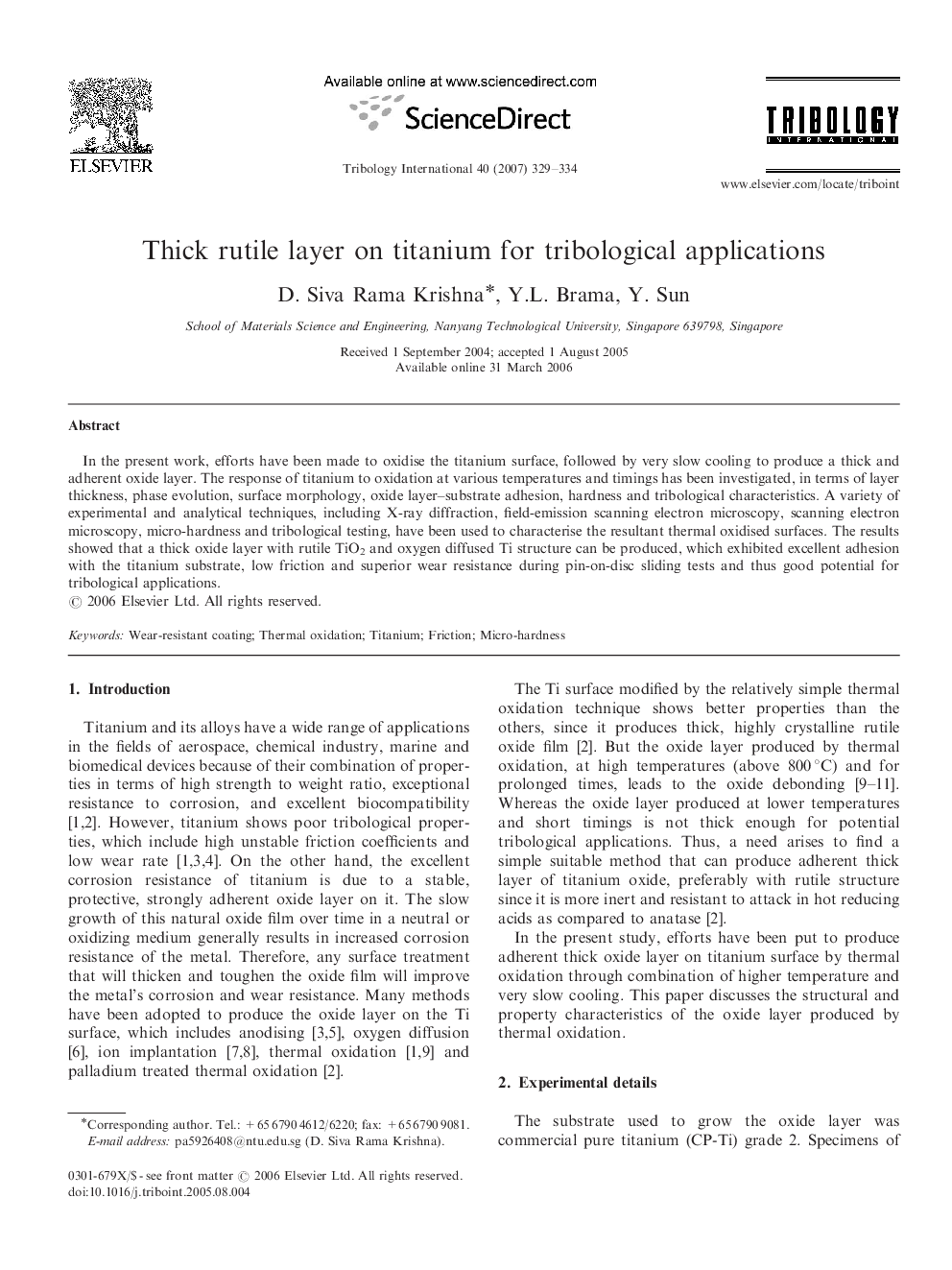| Article ID | Journal | Published Year | Pages | File Type |
|---|---|---|---|---|
| 616694 | Tribology International | 2007 | 6 Pages |
Abstract
In the present work, efforts have been made to oxidise the titanium surface, followed by very slow cooling to produce a thick and adherent oxide layer. The response of titanium to oxidation at various temperatures and timings has been investigated, in terms of layer thickness, phase evolution, surface morphology, oxide layer-substrate adhesion, hardness and tribological characteristics. A variety of experimental and analytical techniques, including X-ray diffraction, field-emission scanning electron microscopy, scanning electron microscopy, micro-hardness and tribological testing, have been used to characterise the resultant thermal oxidised surfaces. The results showed that a thick oxide layer with rutile TiO2 and oxygen diffused Ti structure can be produced, which exhibited excellent adhesion with the titanium substrate, low friction and superior wear resistance during pin-on-disc sliding tests and thus good potential for tribological applications.
Related Topics
Physical Sciences and Engineering
Chemical Engineering
Colloid and Surface Chemistry
Authors
D. Siva Rama Krishna, Y.L. Brama, Y. Sun,
